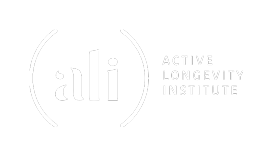Rich McKay | April 3, 2018 Fonte: IBM INdustries
Fifty percent of the entire U.S. workforce will be ready to retire in the next five to ten years, according to the U.S. Department of Labor. That includes 25 percent of the utility workforce in the next five years, says the U.S. Department of Energy.
To learn more about the impacts, we spoke with Eva Schulte, IBM Energy, Environment, and Utilities (EE&U) Industry Strategy Lead.
What challenges does an aging workforce present for the industry?
Utility employees are broadly split into two categories: office-oriented (front or back office operations) and field operations. Workforce turnover is an especially tricky issue for field operations. It can take up seven years to train a lineman worker. Why so long? Some training happens upfront through formal training programs, employee manuals, and on-the-job aids. But people gain a lot of experience and knowledge through exposure to different scenarios over time: responding to infrequent major storms, for example.
That specialized, hands-on expertise is valuable and at risk of being lost as the workforce ages–through a combination of the large amount of retiring Baby Boomers and the length of training time for new field workers. It’s exciting to consider how technology could mitigate this problem.
How can digital technology help preserve and transfer the knowledge in retiring workers’ brains?
“In their brains” is a good way to describe it because that accumulated knowledge might not be documented, or might exist in the form of hundreds of engineer notes, drawings, and daily work logs. It’s too much information for one person to process at a rapid pace. However, unstructured data can be analyzed by AI, which uses tools like machine learning, natural language processing, and visual recognition to uncover trends, digitize knowledge, and scale expertise across an organization.
Woodside Energy, an energy company in Australia, used Watson, IBM’s AI platform, to digitize and scale 30 years of engineering expertise and more than 38,000 documents, like field notes, drawings, and maintenance logs. Watson turned that data into insights, used analytics to recommend the next best course of action, and enabled maintenance technicians to make smarter, faster, and evidence-based decisions.
Are companies also looking at keeping mature or older employees longer?
The bigger issue is a lack of inflow of talent. Millennials care about how much their employers use technology, and whether they use it well, but utilities are not typically known for being disrupters or technological front-runners.
According to a study by CompTIA, three-quarters of Millennials say technology usage by a company affects their employment decisions. Only about half of Baby Boomers say that tech usage factors into employment decisions. This discrepancy highlights the need to better integrate digital business processes to attract a variety of employees.
Yes, this shift could be seen as a problem, but the fact that younger generations prefer to work differently is an opportunity to make a company more efficient, digital, and agile—all resulting in lower operating costs. These benefits are true for all industries, including government.
Are there any particular skills in short supply? How could EE&U companies hire or augment for future skills?
Much of it depends on what the future of utilities looks like, and the industry is changing rapidly. The industry is heading toward more integration of renewable resources, like solar and wind. In some places, utilities are becoming more resources, like solar and wind. In some places, utilities are becoming more deregulated and may face competition from outside industries. All this puts the traditional utility business model at risk.
Utilities are exploring new revenue streams. The Los Angeles Department of Water and Power (LADWP) and Électricité de France (EDF), for example, use online marketplaces to sell energy efficiency products to their customers. Many utilities worldwide are exploring or implementing electric vehicle charging station pilots. These show the potential to cross typical industry boundaries and stretch the scope of what it means to be a utility. To prepare for the future, utilities will need employees with new skills, like data science, app development, customer-centric marketing, and analytics.
How can utilities prepare for the aging workforce?
From my perspective, utilities must answer three main questions:
- How do you retain the knowledge accumulated by workers nearing retirement? The answer could be digitization of unstructured data, skills assessment to understand where the gaps are going to occur, or development of strategic succession plans.
- How will you improve training programs of current employees to fill these gaps more quickly? One example is at DTE Energy, which is exploring the idea of using virtual reality to simulate high consequence scenarios for employee training. This allows employees to be trained more quickly, in a safe and observable environment.
- How do you entice younger employees to work in this sector? It may mean creating a more digital workplace or focusing on other aspects of the job experience to appeal more to younger employees. This applies to recruitment and onboarding, throughout the employee’s tenure, and right up to retirement.
Success will come from proactive planning and the adoption of new technology. Utilities need to have a strategy now for how they are going to address this demographic shift.
